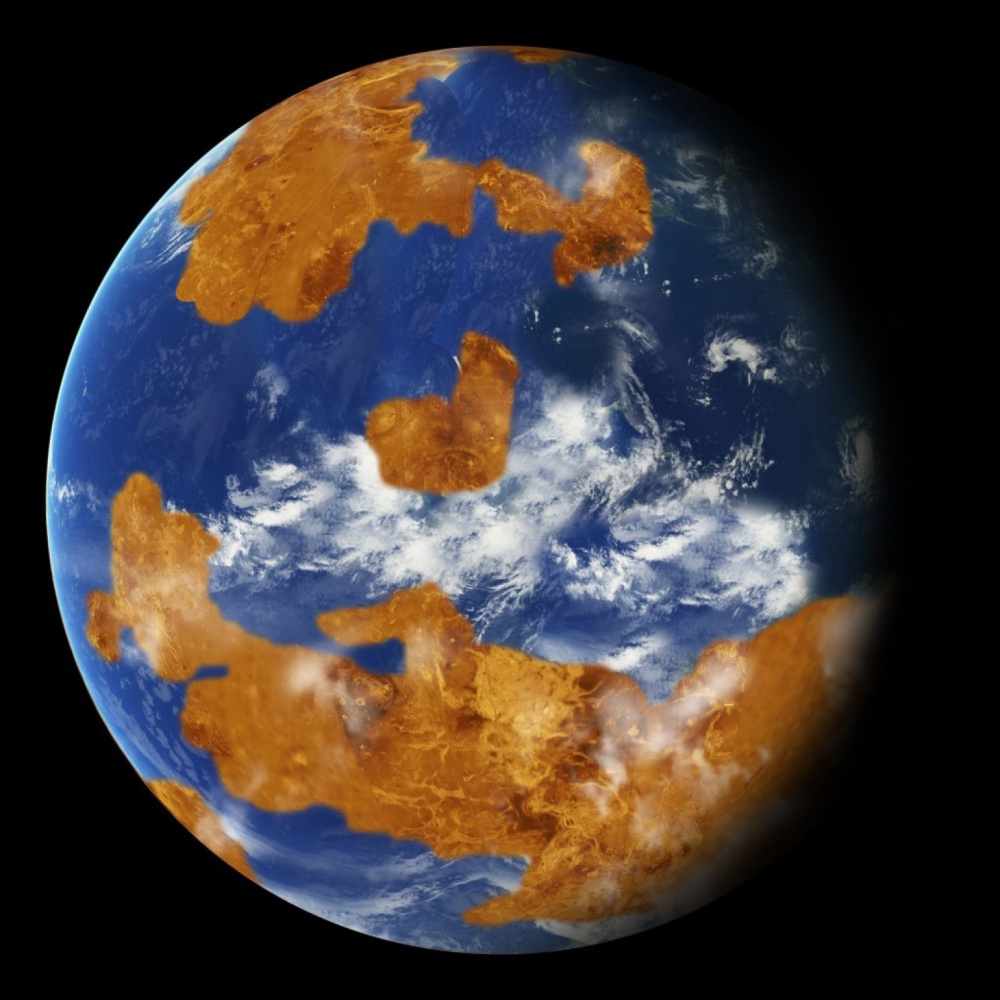For a 2-billion-year-long span, ending about 715 million years ago, Venus was likely a much more pleasant spot that it is today. To observe Venus now is to witness a dry and toxic hellscape, where the planet heats up to a scorching 864 degrees Fahrenheit. A super-strong electric wind is believed to suck the smallest traces of water into space. With apologies to Ian Malcolm, life as we know it could not find a way.
But travel back in time a few billion years or so. Ancient Venus, according to a new computer model from NASA, would have been prime solar system real estate, to the point it may have been downright habitable.
That life would find Venus amenable hinges on two main factors. Venus would have needed much balmier temperatures, and it also would have needed a liquid ocean – which is a significant if, though elemental traces like deuterium indicate water existed on Venus at one point. As Colin Wilson, an Oxford University planetary physicist told Time in 2010, “everything points to there being large amounts of water in the past.”
Venusian temperatures, too, appear to have been far cooler when the solar system was younger. NASA’s Goddard Institute for Space Studies, in a report published Thursday in the journal Geophysical Research Letters, calculated that the average surface temperature 2.9 billion years ago was about 50 degrees Fahrenheit. Such temperature would have made Venus, surprisingly for a planet closer to the Sun, a bit chillier than Earth was at the time.
To determine the ancient temperatures of Venus, NASA scientists applied a computer model similar to the ones used to predict the future of Earth climate. The simulations relied on topographical data from the Magellan mission, a spacecraft that in the early 1990s mapped 98 percent of the surface of Venus with radar.
“Many of the same tools we use to model climate change on Earth can be adapted to study climates on other planets, both past and present,” said Michael Way, a Goddard researcher and the lead author of the new study, in a press release. “These results show ancient Venus may have been a very different place than it is today.”
Old Venus would have orbited a Sun about 30 percent dimmer than present-day Sol. Due to its proximity, Venus would still be baked in unearthly amounts of sunlight. But the GISS simulation revealed that, when Venus’s extremely slow daily rotation is taken into account, unusual weather patterns emerge. (Venus is strange in that it rotates so slowly – 243 Earth days per spin – it actually completes a yearly orbit of the sun before its day is over. That is, a Venusian year is shorter than Venusian a day.) Were there to be a shallow ocean on Venus at the time, the sun would have churned some of the liquid sea into a thick cloud layer. The net effect would have been like the flap of foil across a car windshield.
Those ancient Venusian clouds would act “like an umbrella to shield the surface from much of the solar heating,” said GISS’s Anthony Del Genio in the press release. “The result is mean climate temperatures that are actually a few degrees cooler than Earth’s today.”
Exactly when Venus overheated remains a mystery. Despite how hot and dry our solar system twin is today – Venus is about the same size as Earth, and possibly within the so-called “Goldilocks zone” of habitable worlds – the odds seem increasingly good it may have had the right conditions for life a long, long time ago.
Send questions/comments to the editors.




Success. Please wait for the page to reload. If the page does not reload within 5 seconds, please refresh the page.
Enter your email and password to access comments.
Hi, to comment on stories you must . This profile is in addition to your subscription and website login.
Already have a commenting profile? .
Invalid username/password.
Please check your email to confirm and complete your registration.
Only subscribers are eligible to post comments. Please subscribe or login first for digital access. Here’s why.
Use the form below to reset your password. When you've submitted your account email, we will send an email with a reset code.